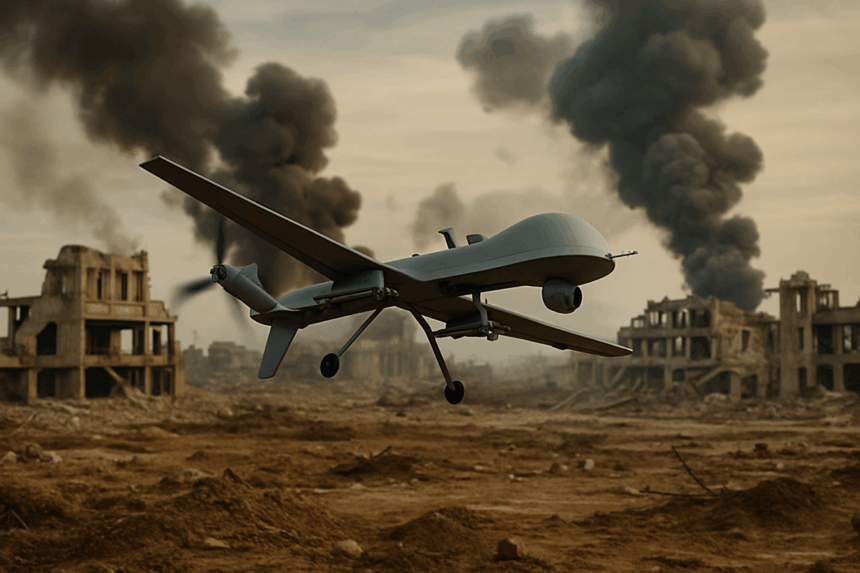Drones play a growing role in modern warfare worldwide. From the skies over Ukraine to the streets of Gaza, unmanned aerial vehicles (UAVs) execute precision strikes, gather critical intelligence, and shift the dynamics of combat. Their widespread adoption forces militaries to rethink tactics, defense, and strategic planning. Understanding drone warfare reveals how these machines are reshaping global conflicts.
What’s Happening & Why This Matters
In June 2025, Ukraine launched an ambitious drone campaign named Operation Spiderweb. Ukrainian forces deployed 117 first-person view (FPV) drones deep into Russian territory, targeting five airbases. These strikes targeted the destruction of strategic bombers, including the Tupolev Tu-95MS and Tu-22M3, which are crucial components of Russia’s long-range aviation fleet. Ukraine claims the operation eliminated roughly one-third of Russia’s bomber capacity, substantially reducing its strike capabilities.
The drones were launched from camouflaged trucks crossing into Russian airspace, a testament to Ukraine’s growing tactical ingenuity. This campaign is the farthest recorded use of drone strikes deep inside enemy territory in the ongoing war. The operation took 18 months to prepare — notable for the strategic weight placed on unmanned attacks.
Meanwhile, Israel’s military is leveraging drones through its elite Sky Rider drone unit, which has played a pivotal role in recent conflicts against Hamas and Hezbollah. Since hostilities flared up in Gaza, the unit claims to have neutralized more than 700 militants using minor attack and reconnaissance drones. These drones provide vital real-time intelligence and precision strike capability in complex urban environments.

The Sky Rider unit operates with a mix of active-duty troops, reservists, and female combatants. Its drones excel in harsh conditions, including storms and dust, enabling continuous operations that support infantry and special forces on the ground.
Opposing forces have intensified their drone usage as well. Hamas has increased drone operations inside Gaza, conducting surveillance and launching attacks against Israeli troops. Israeli Defense Forces (IDF) reservists express concerns about drones smuggled during ceasefire periods, which complicate efforts to maintain stability and security.
The increasing reliance on drones signals a fundamental change in warfare. These vehicles allow less-equipped forces to challenge traditional military power through surprise attacks and intelligence gathering. As a result, many militaries invest heavily in drone detection, jamming, and interception systems to counter emerging aerial threats.

The growing presence of drones impacts not only military strategy but also civilian safety. Drone strikes raise questions about civilian deaths, collateral damage, ethical use, and the potential for proliferation among non-state actors.
TF Summary: What’s Next
Drone warfare plays a decisive role in current global conflicts, as Ukraine’s deep strikes inside Russia and Israel’s frontline drone operations indicate. Rising drone use by militant groups like Hamas increases regional risks and complicates defense.
There is no end insight. Armed forces will continue to leverage drone offensive, defensive, and intelligence capabilities by fortifying their tactics to manage this new reality. Drone warfare’s future depends on the advantages the technology offers versus the challenges posed to security and civilian protection.
— Text-to-Speech (TTS) provided by gspeech



